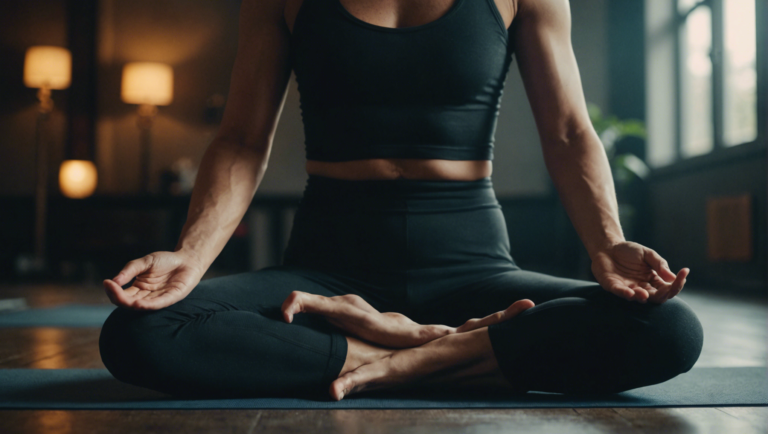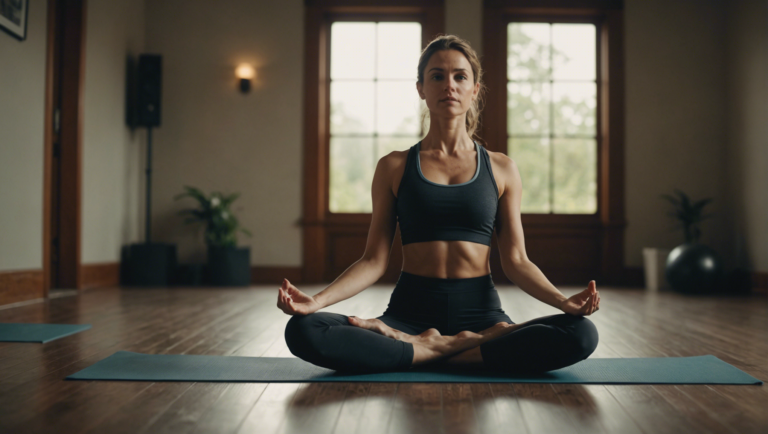Guidelines For Practicing Forrest Yoga: Understanding Its Benefits And Techniques
Understanding the Core Principles of Forrest Yoga
Forrest Yoga is a unique style of yoga that focuses on healing, strength, and spirit. Founded by Ana T. Forrest, this practice aims to address the physical and emotional challenges of modern life through a series of carefully designed poses and breath work. To truly understand Forrest Yoga, it is essential to delve into its core principles.
The Breath as a Guide
Central to Forrest Yoga is the emphasis on deep breathing. The practice encourages practitioners to use their breath as a guide, allowing it to create a deeper connection between the body and mind. By focusing on full, deep breaths, individuals can release tension, increase their energy levels, and cultivate a sense of calmness. This conscious breathing helps in building awareness and presence during the practice, leading to a more profound experience on and off the mat.
Intention and Spirituality
Another fundamental principle of Forrest Yoga is setting intention. Practitioners are encouraged to delve deep into their inner selves and understand their motivations for practicing. By setting clear intentions, individuals can align their physical practice with their spiritual growth, creating a harmonious balance between the two. This focus on intention allows for a more meaningful and transformative yoga practice.
Strength and Integrity
Forrest Yoga places a strong emphasis on building physical strength and integrity in the body. The practice includes challenging poses that require both effort and mindfulness. By holding poses for longer durations and paying attention to proper alignment, practitioners can develop not only physical strength but also mental resilience. This combination of strength and integrity helps individuals build a solid foundation for their yoga practice and daily life.
Healing and Self-Awareness
At the core of Forrest Yoga is the belief in the body’s ability to heal itself. Through the practice of yoga, individuals can release emotional and physical trauma stored in the body, allowing for deep healing to occur. By cultivating self-awareness and learning to listen to their bodies, practitioners can address areas of tension and discomfort, ultimately leading to a sense of liberation and wholeness.
Connection to Nature
Forrest Yoga draws inspiration from the natural world, encouraging practitioners to connect with the earth and all its elements. The practice incorporates animal-inspired movements and sequences that mimic the fluidity and strength found in nature. By fostering a deep connection to the environment, individuals can ground themselves, find inner peace, and experience a profound sense of oneness with the world around them.
Forrest Yoga is not just a physical practice but a holistic approach to health and well-being. By understanding and embracing its core principles of breath, intention, strength, healing, and connection to nature, individuals can embark on a transformative journey of self-discovery and growth. So, dive deep into the foundations of Forrest Yoga and unlock the incredible benefits it has to offer.
Exploring the Physical and Mental Benefits of Practicing Forrest Yoga
Practicing Forrest Yoga offers a holistic approach that benefits both the physical and mental well-being of individuals. This style of yoga, founded by Ana Forrest, emphasizes on healing, strength, and spirituality. By understanding the guidelines for practicing Forrest Yoga, individuals can unlock a wealth of benefits and learn techniques that promote overall health and wellness.
The Physical Benefits of Forrest Yoga
Forrest Yoga focuses on physical strength, flexibility, and breath work. Through a series of poses and sequences, practitioners engage their muscles while emphasizing deep breathing techniques. This combination helps in improving circulation, increasing energy levels, and enhancing overall physical health. The deliberate movements in Forrest Yoga also aid in building core strength and toning muscles. By practicing this form of yoga regularly, individuals can experience increased stamina, improved balance, and a greater sense of vitality in their bodies.
The Mental Benefits of Forrest Yoga
In addition to its physical advantages, Forrest Yoga is renowned for its mental and emotional benefits. The practice encourages individuals to connect with their inner selves, promoting self-awareness and mindfulness. By focusing on breath work and holding poses, practitioners can cultivate a sense of calmness and mental clarity. This yoga style also incorporates elements of Native American spirituality and encourages individuals to heal emotional wounds, release tension, and find inner peace. Through consistent practice, Forrest Yoga can help individuals manage stress, anxiety, and depression, leading to an improved overall sense of well-being.
Techniques in Forrest Yoga Practice
Practicing Forrest Yoga involves unique techniques that set it apart from other yoga styles. Some key elements include deep breathing or pranayama, active core engagement, long holds in poses, and sequences that promote spinal health. By focusing on these techniques, individuals can deepen their practice, build strength, and increase flexibility. The use of specific poses and props in Forrest Yoga also aids in targeting different muscle groups and promoting overall body alignment. By incorporating these techniques into their practice, individuals can experience a deeper connection to their bodies and minds.
Understanding the Guidelines for Practicing Forrest Yoga
It is essential for individuals to understand and follow certain guidelines when practicing Forrest Yoga to ensure a safe and fulfilling experience. Beginners are advised to start slowly, listen to their bodies, and work with a qualified instructor to learn the correct alignment and techniques. Building strength and flexibility gradually is key to avoiding injuries and reaping the full benefits of this practice. Additionally, maintaining a consistent practice and incorporating moments of reflection and intention setting can enhance the overall experience of Forrest Yoga.
Forrest Yoga offers a transformative journey towards physical and mental well-being. By embracing the guidelines and techniques of this practice, individuals can unlock a range of benefits that nurture their mind, body, and spirit. Whether seeking increased strength, flexibility, emotional healing, or inner peace, Forrest Yoga provides a pathway to holistic wellness for practitioners of all levels.
Incorporating Breathwork and Meditation Techniques in Forrest Yoga Sessions
Breathwork and meditation are essential components of Forrest Yoga sessions that enhance the practice by focusing on mindfulness, deepening the connection between body and mind, and promoting overall well-being. these techniques in Forrest Yoga can bring about profound benefits for practitioners at all levels. Let’s explore how the integration of breathwork and meditation can elevate your yoga practice.
Importance of Breathwork in Forrest Yoga
Breathwork, also known as pranayama, plays a crucial role in Forrest Yoga sessions. The practice involves conscious control of breath to regulate energy flow within the body. In Forrest Yoga, specific breathing techniques are employed to build heat, increase circulation, and awaken dormant muscles. By incorporating breathwork into your practice, you can deepen your poses, improve concentration, and release tension and stress.
Benefits of Meditation in Forrest Yoga
Meditation cultivates mindfulness, allowing practitioners to be fully present in the moment. In Forrest Yoga, meditation is integrated to quiet the mind, increase self-awareness, and facilitate emotional healing. Through meditation, individuals can develop a deep sense of inner peace, enhance their ability to focus, and reduce anxiety and depression. The practice of meditation in Forrest Yoga provides a space for self-reflection and spiritual growth.
Techniques for Breathwork and Meditation in Forrest Yoga
-
Integrate Breath Awareness: Begin your Forrest Yoga session by focusing on your breath. Pay attention to the inhales and exhales, and strive to maintain a steady and controlled breath throughout your practice. Coordinate your movements with your breath to create a fluid and meditative flow.
-
Engage in Dirga Pranayama: Dirga pranayama, or three-part breath, is a fundamental breathing technique in Forrest Yoga. This technique involves breathing deeply into the belly, ribcage, and chest to expand lung capacity and promote relaxation. Practice dirga pranayama during static poses or transitions to center yourself and calm the mind.
-
Devote Time to Meditation: Dedicate a few minutes at the end of your Forrest Yoga practice to meditation. Find a comfortable seated position, close your eyes, and focus on your breath or a specific mantra. Allow thoughts to come and go without judgment, embracing a sense of inner stillness and serenity.
-
Explore Mindfulness Techniques: Embrace mindfulness throughout your practice by bringing awareness to each movement, sensation, and breath. Stay present in the moment, letting go of distractions and cultivating a deep connection with your body and surroundings.
Incorporating breathwork and meditation techniques in Forrest Yoga sessions can transform your practice, bringing about a harmonious balance of body, mind, and spirit. By embracing these practices, you can enhance your well-being, deepen your yoga journey, and unlock a profound sense of inner peace and vitality.
Adapting Forrest Yoga for Different Skill Levels and Body Types
When practicing Forrest Yoga, it’s essential to understand how to adapt the practice for different skill levels and body types. By making appropriate modifications, individuals can fully experience the benefits of this unique yoga style regardless of their physical abilities or limitations. Here are some expert guidelines on adapting Forrest Yoga for various practitioners:
Understanding the Basics of Forrest Yoga Practice
Forrest Yoga, created by Ana Forrest, focuses on healing, strengthening, and reconnecting with one’s body. It emphasizes deep breathing, core work, and longer holding of poses to build strength and awareness. When adapting Forrest Yoga for different skill levels, it’s crucial to start with the basics. Beginners should begin with foundational poses and gradually progress to more advanced poses as they build strength and flexibility.
Modifications for Beginners and Novice Practitioners
For individuals new to yoga or Forrest Yoga, modifications are essential to prevent injuries and ensure a positive experience. Beginners should focus on proper alignment and breathing techniques before advancing to more challenging poses. Props such as blocks, straps, and bolsters can provide support and assistance in achieving correct alignment. Teachers should offer variations and modifications to accommodate beginners’ levels of flexibility and strength.
Adapting for Intermediate Practitioners
Intermediate practitioners of Forrest Yoga have developed a foundation of strength and flexibility. For this group, instructors can introduce more complex poses and sequences to deepen their practice. Intermediate students may benefit from focusing on arm balances, inversions, and backbends to enhance their practice further. Teachers should encourage students to explore their edge while emphasizing proper alignment and breath work.
Advanced Modifications for Experienced Practitioners
Advanced practitioners of Forrest Yoga have a deep understanding of the practice and can explore challenging poses with confidence and mindfulness. Instructors can introduce advanced variations of poses, transitions, and sequences to keep experienced students engaged and inspired. Advanced practitioners may work on mastering more intricate poses like king pigeon pose, flying crow pose, and scorpion pose. Teachers should provide hands-on adjustments and individualized guidance to support their progression.
Adapting for Different Body Types and Limitations
Forrest Yoga can be adapted for individuals with different body types and physical limitations. Teachers should offer variations and props to accommodate practitioners with injuries, chronic conditions, or limited mobility. It’s essential to create a safe and inclusive environment where students feel supported and empowered to modify poses as needed. By encouraging self-awareness and self-compassion, Forrest Yoga can be accessible to individuals of all body types and abilities.
Adapting Forrest Yoga for different skill levels and body types requires sensitivity, awareness, and expertise. By providing appropriate modifications and variations, teachers can ensure that all practitioners experience the transformative benefits of Forrest Yoga, regardless of their level of experience or physical capabilities.
Tips for Establishing a Consistent Forrest Yoga Practice
Establishing a consistent Forrest Yoga practice is essential to experience the full range of benefits this unique yoga style has to offer. By following some helpful tips and guidelines, practitioners can enhance their practice and deepen their connection with themselves.
Understanding Forrest Yoga
Forrest Yoga is a modern style of yoga created by Ana Forrest that focuses on healing, strength, and reconnecting with one’s body. It incorporates intense poses, deep breathing techniques, and a strong emphasis on core work to help release tension and build a strong and flexible body.
Setting Intentions
One of the key aspects of establishing a consistent Forrest Yoga practice is setting clear intentions. Before starting each practice, take a moment to reflect on what you hope to achieve. Whether it’s to build strength, increase flexibility, or find inner peace, setting intentions can help guide your practice and keep you motivated.
Creating a Sacred Space
Designating a specific area in your home as your yoga space can enhance your practice. Make this space free of clutter, and consider adding elements such as candles, essential oils, or calming music to create a soothing environment. Having a dedicated space for your practice can help signal to your mind that it’s time to focus and be present.
Practicing Breathwork
Breathwork is a fundamental aspect of Forrest Yoga. deep, intentional breathing techniques can help you connect with your body on a deeper level and release tension. During your practice, focus on breathing deeply into your diaphragm and exhaling fully. This can help calm your mind and energize your body.
Embracing Challenges
Forrest Yoga often includes challenging poses that push you out of your comfort zone. Instead of shying away from these poses, embrace them as opportunities for growth. Remember that yoga is a journey, and progress comes with consistent practice and dedication. Listen to your body, and honor where you are in your practice without judgment.
Seeking Professional Guidance
If you’re new to Forrest Yoga or struggling to establish a consistent practice, consider seeking guidance from a certified Forrest Yoga teacher. A qualified instructor can provide personalized feedback, modifications for poses, and encouragement to help you progress in your practice safely and effectively.
Establishing a consistent Forrest Yoga practice requires dedication, intention, and a willingness to embrace challenges. By setting clear intentions, creating a sacred space, practicing breathwork, and seeking guidance when needed, practitioners can deepen their practice and experience the transformative benefits of Forrest Yoga. Remember that consistency is key, and progress comes with patience and commitment to your yoga journey.
Conclusion
Forrest Yoga into your wellness routine can bring about transformative changes in your physical and mental well-being. By understanding the core principles of the practice, such as connecting to your body, breathing deeply, and cultivating mindfulness, you can start your journey towards a more balanced and harmonious life. Forrest Yoga is not just a physical practice but a holistic approach to health that addresses the mind, body, and spirit.
Exploring the physical and mental benefits of practicing Forrest Yoga reveals a myriad of advantages for practitioners. The focus on core strength, flexibility, and alignment helps improve posture, increase muscle tone, and prevent injuries. Additionally, the emphasis on breathwork and meditation in Forrest Yoga sessions promotes stress reduction, mental clarity, and emotional resilience. The benefits extend beyond the physical as practitioners often report feeling more grounded, centered, and connected to themselves and the world around them.
Breathwork and meditation techniques in Forrest Yoga sessions is essential for deepening your practice and reaping its full benefits. Conscious breathing not only oxygenates the body but also calms the mind, allowing for greater focus and presence on the mat. Meditation techniques, such as intention setting, visualization, and mindfulness, enhance the inward journey of Forrest Yoga, fostering introspection and self-awareness. By combining breathwork and meditation with the physical postures, you can experience a holistic and integrated practice that nurtures both body and soul.
Adapting Forrest Yoga for different skill levels and body types is a hallmark of this inclusive and accessible practice. Whether you are a beginner or an experienced yogi, Forrest Yoga offers modifications and variations to suit individual needs and abilities. Poses can be adjusted to accommodate injuries, limitations, or specific goals, ensuring that everyone can benefit from this empowering practice. By honoring your body’s unique strengths and limitations, you can practice Forrest Yoga safely and effectively, regardless of your fitness level or body shape.
Tips for establishing a consistent Forrest Yoga practice involve creating a supportive environment that nurtures your commitment to self-care and growth. Setting aside dedicated time for practice, creating a sacred space for yoga, and finding a community of like-minded individuals can motivate and inspire you on your journey. Consistency is key in reaping the long-term benefits of Forrest Yoga, as regular practice cultivates discipline, resilience, and inner strength. By approaching your practice with dedication and intention, you can harness the transformative potential of Forrest Yoga to enhance every aspect of your life.
Forrest Yoga offers a unique and empowering pathway to holistic health and well-being. By embracing its core principles, exploring its physical and mental benefits, incorporating breathwork and meditation techniques, adapting the practice to your individual needs, and establishing a consistent routine, you can experience profound transformation on and off the mat. Commit to your practice with an open heart and a curious mind, and let Forrest Yoga guide you on a journey of self-discovery, healing, and growth.



